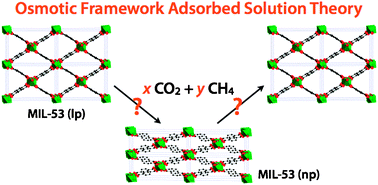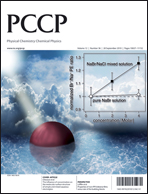The osmotic framework adsorbed solution theory: predicting mixture coadsorption in flexible nanoporous materials†
Abstract
Predictive analytical methods are crucial tools in the design of adsorptive gas separation processes. While they are widely used for rigid nanoporous solids, there is a lack of flexible materials, including the very topical and promising dynamic metal–organic frameworks (MOFs), which display such eye-catching phenomena as gate opening and breathing. We present here the osmotic framework adsorbed solution theory (


 Please wait while we load your content...
Please wait while we load your content...